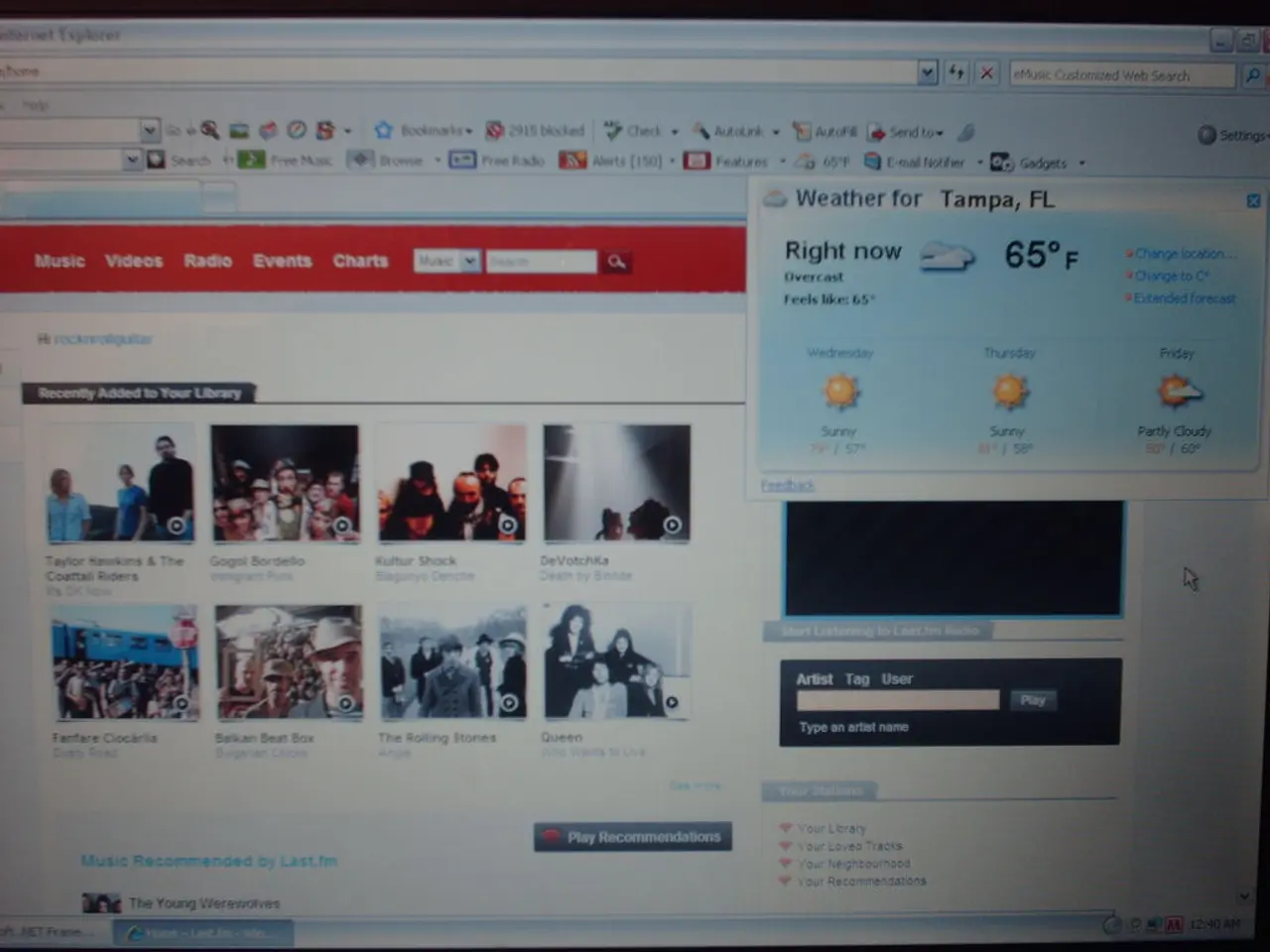Guide on Video Accessibility for Content Producers in 2025
In the digital age, video content has become a dominant force, accounting for 82.5% of all internet traffic. However, ensuring that this content is accessible to everyone, including individuals with disabilities, is of utmost importance. Here are some best practices for implementing video accessibility in content creation.
First and foremost, providing captions (closed captions) is crucial. Captions not only help people who are deaf or hard of hearing access the spoken content, but they also aid in understanding important audio cues such as tone and mood. They are beneficial for non-native speakers, viewers in noisy or sound-off environments, and can even boost engagement across platforms [1][3][4].
Including subtitles for translations is another essential practice. This supports viewers who don’t understand the video's language [3]. For visually impaired viewers, adding audio descriptions that narrate visual elements, describing scenes, actions, and important visual information, is vital [3].
Offering transcripts of all video and audio content is also recommended. Transcripts help users who prefer text or use assistive technologies, improving overall accessibility and searchability [4]. Structuring video with chapter titles or markers aids navigation [3].
Using accessible video players that support these features and allow control over playback speed, volume, and captions is essential [1][2]. It's important to avoid flashing visuals and ensure cognitive accessibility by simplifying visual presentation and providing alternative ways to understand content [5]. Writing effective alternative text for any visual elements related to the video, especially on social media and websites, is also crucial [5].
Following established legal and technical standards like WCAG (Web Content Accessibility Guidelines), ADA compliance, and Section 508 helps meet accessibility regulations for digital content [1][2]. The European Accessibility Act (EAA), which officially took effect on June 28, 2025, mandates that all new digital content, including videos, must be accessible to people with disabilities [2].
Many video platforms are already embracing these practices. For instance, Rotten Mango provides both an audio-only version and a YouTube video version with closed captions, making the content accessible for hard-of-hearing audiences. TED-Ed's animated lessons combine engaging visuals with strong accessibility practices, including edited closed captions that capture both dialogue and important non-speech sounds [3].
Tools like the Kapwing Video Accessibility Checklist and the Kapwing closed caption generator make it easier for creators to implement these practices, providing recommendations for adding accurate captions, providing audio descriptions, including visual descriptions, providing descriptive transcripts, and providing visual contrast [6].
Social media platforms like Instagram, TikTok, and X now include built-in alt text for images and auto-captioning, making content more inclusive and discoverable for everyone [7].
In the US, over 8,800 digital accessibility lawsuits were filed in 2024 for non-compliance, underscoring the importance of these practices [8]. As the global population with vision impairment is projected to reach over 2.2 billion people in 2025 [9], and with over 430 million people experiencing disabling hearing loss [10], the need for accessible video content is more crucial than ever.
By implementing these best practices, we can ensure that video content is usable by people with disabilities, including hearing, vision, and cognitive impairments, and also improve the experience for all users in diverse viewing scenarios.
- Incorporating captions, subtitles for translations, audio descriptions, and transcripts in video content contributes to health-and-wellness by making it accessible to viewers with various medical-conditions, such as hearing loss or vision impairment.
- Technology plays a significant role in education-and-self-development, as accessible video content helps individuals learn and grow, regardless of their physical or cognitive abilities.
- Implementing video accessibility best practices, such as providing alternative ways to understand content and adhering to established legal and technical standards, is vital for promoting a lifestyle that values inclusivity and diversity.




